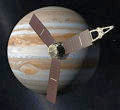|
Project Home
After we completed our participation in the TARC 2012 final fly-off, we held a meeting to discuss the
challenge for 2012. The following items are some really good comments
that we hope to consider them in the 2013 challenge.
Things we did well in 2011/12
-
We made some nice rockets.
-
We had good weather.
-
No rockets were lost (no explosions, hung
in trees, lost in fields).
-
We had note pads in our project boxes.
-
We weighed motors and eggs to eliminate
variables.
-
All the motors were from one manufacturing
lot.
-
We found a new launch site.
Here are some improvement suggestions.
-
Collect more data from the launches.
-
Have someone in charge of collecting data at each
launch.
-
Conduct more launches, maybe on Sunday.
-
Consider using motors from a different manufacturer
(not AeroTech).
-
Make more rockets.
-
Have a Saturday workshop in the fall.
-
Do something to reduce or eliminate the spikes (which
seemed to be worse with the new altimeters)
-
Isolate the eggs from the altimeter.
-
Make sure the altimeter is tight in
the tube (foam block).
-
Make a very long shock cord.
-
Attach the shock cord to the outside
of the launch rail button.
-
Two separate recovery systems (booster
and cargo).
-
Does the sizing/spacing of the holes
in the cargo unit help with the spikes on the altitude
curve?
-
Have more members committed to TARC.
-
With our irregular attendance, an assistant lead is
needed, and all members need a basic understanding of the program and/or
responsibilities. Either a notebook or computer folder to communicate
status and plans.
-
Need a flash drive always at the office, so all work
is stored on the shared drive instead of the individual laptops
Investigation Ideas
-
Spark suppressor or Nomex cloth to protect chutes.
-
Launch with an old and new altimeter to compare the
results. Compare to results from manual sighting angle/baseline.
Les Cannon pulled these ideas from from TARC 2012 Presentations.
-
Design for payload first. E.g., one
team used part of a pool noodle for the
altimeter-and-eggs holder, which required a BT-300 tube.
Using BT-300 put the design above the maximum weight,
and required a more powerful motor. That resulted in an
altitude of 950’, so they needed to launch at 57 degrees
(I thought 60 was minimum).
-
Test launch plot varying just weight.
Best-fit line to identify launch weight.
-
Use the design software with different
weather conditions (wind, temperature, humidity).
-
Different team members in charge of
(or involved with) different areas. Examples, design,
electrical/launch (they made own launch system),
construction, data-collection and chasers – this team
had at least 9 members.
-
Update design model with results from
test flights.
-
Weigh rocket after launch.
|



